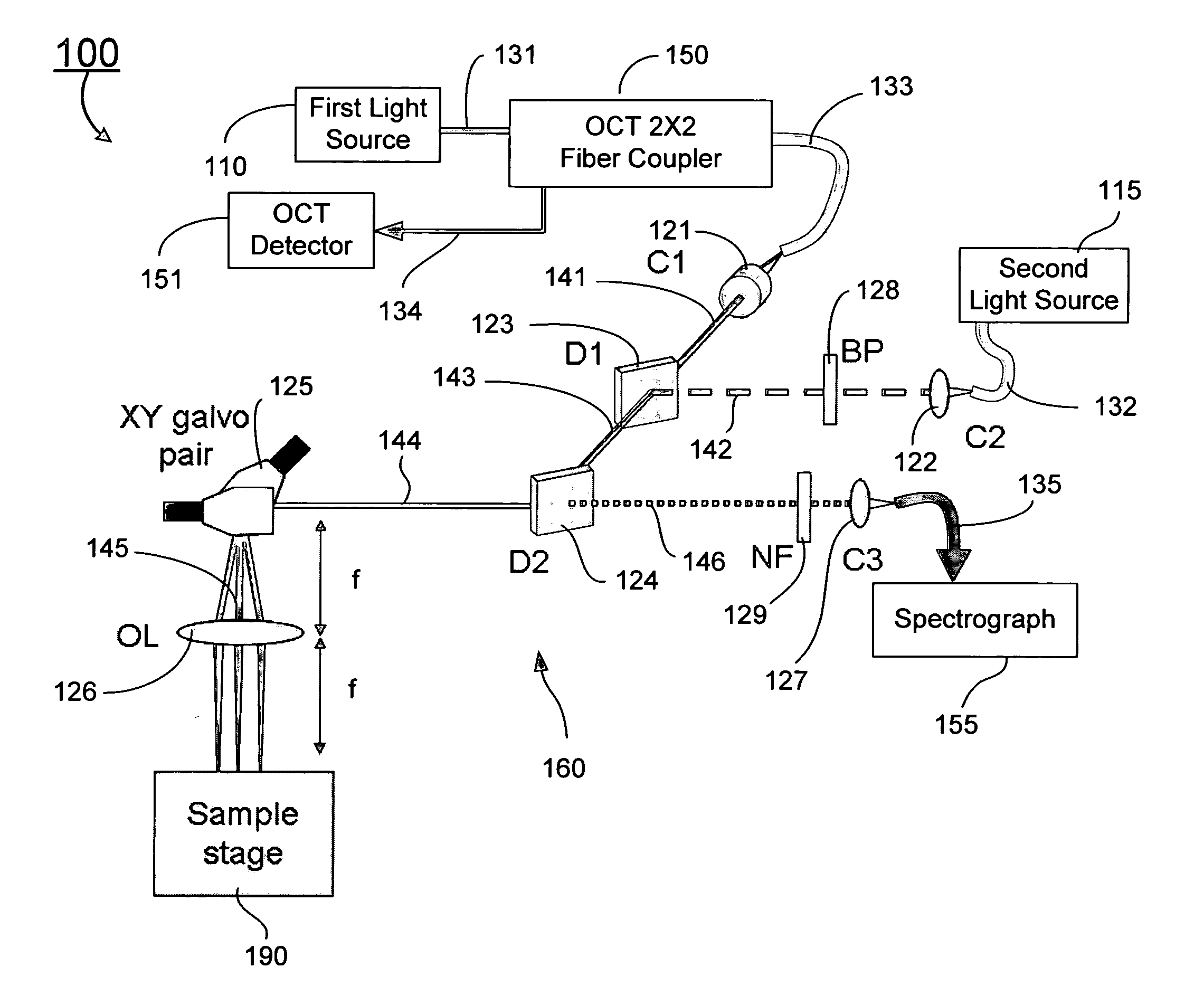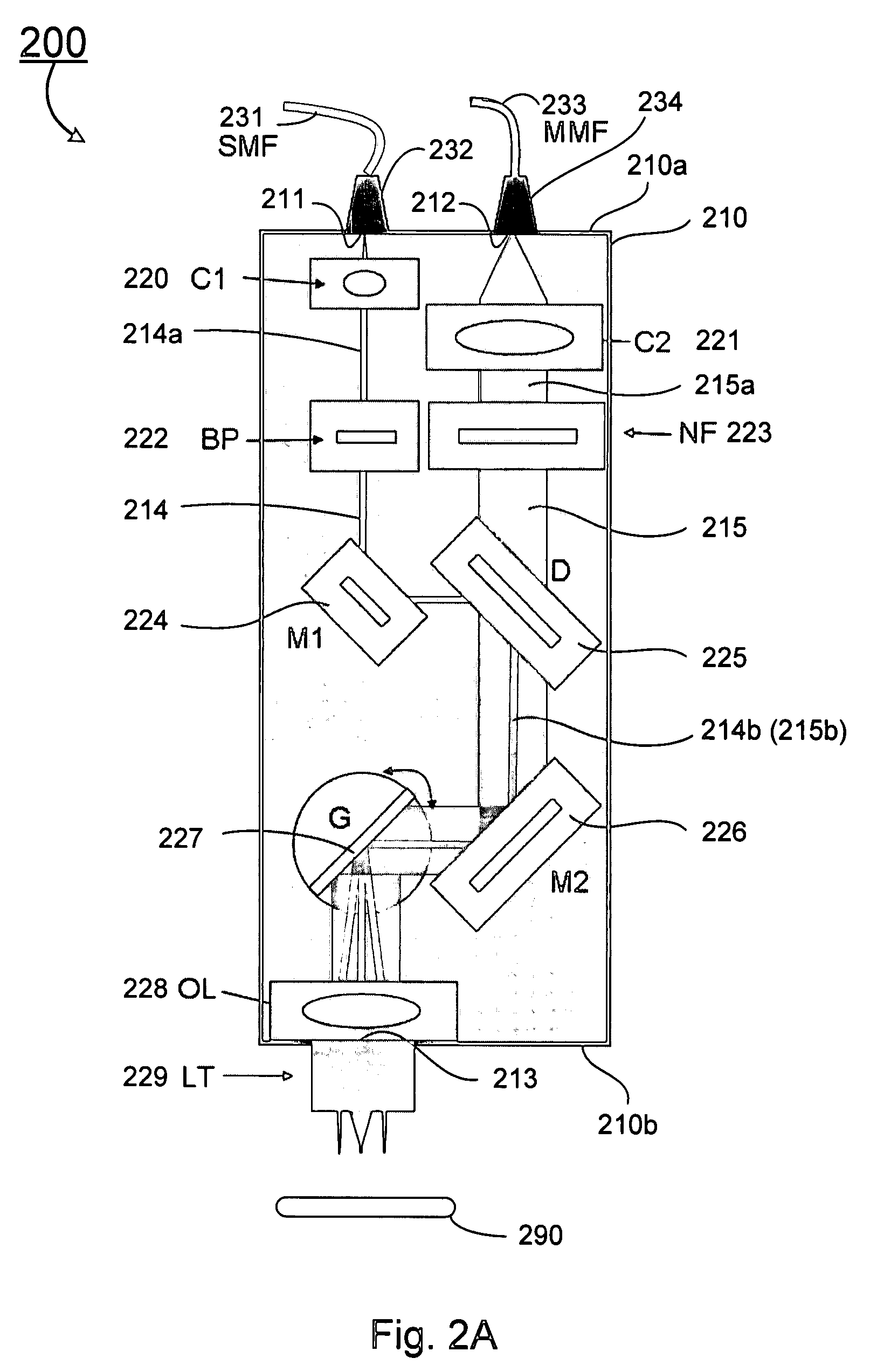Combined raman spectroscopy-optical coherence tomography (rs-oct) system and applications of the same
a technology of optical coherence tomography and raman spectroscopy, which is applied in the field of combined raman spectroscopyoptical coherence tomography (rsoct) system and the application of the same, can solve the problems of poor prognosis, difficult clinical recognition of bcc variants, and inability to completely eliminate residual elastic scattering ligh
- Summary
- Abstract
- Description
- Claims
- Application Information
AI Technical Summary
Benefits of technology
Problems solved by technology
Method used
Image
Examples
example 1
Demonstration of the Complimentary Nature of Raman Spectroscopy and Oct
[0120]The fundamental objective of this example is to validate the utility of combined biochemical and structural analysis of biological tissues with Raman spectroscopy and OCT. To demonstrate the underlying concept in practice an in vitro human skin sample obtained from the Vanderbilt University tissue bank is evaluated with both individual OCT and Raman spectroscopy systems.
[0121]A schematic diagram of the individual OCT system is shown in FIG. 6A. A broadband optical amplifier light source (AFC Technologies, Inc.) with a center wavelength at 1310 nm with a FWHM spectral bandwidth of 61.3 nm (a coherence length of about 13 μm) and an output power of 25.5 mW. The broadband source illuminates a fiber-based Michelson interferometer in which reference delay scanning is achieved with a rapid-scanning optical delay line [36]. Scanning of the sample beam across the specimen is achieved with a galvanometer in the sampl...
example 2
Combined Raman Spectroscopy—OCT System
[0128]While OCT is a powerful technique capable of identifying structural anomalies in scattering samples, it is incapable of determining the composition of structural in-homogeneity. Raman spectroscopy, on the other hand, is a powerful technique for evaluating the biochemical composition of a scattering sample, however it is unable to practically perform and sort of spatial mapping in vivo due to the fundamentally weak nature of Raman scattering. In addition, the weak nature of Raman scattering makes probe placement a critical variable when using Raman spectroscopy to evaluate spatially confined tissue structures in vivo. This example demonstrates the ability of a combined Raman Spectroscopy-OCT device to confirm the suspected chemical composition of a scattering structure in an OCT image, and guide the placement of a Raman probe beam such that optimal Raman backscatter is collected. This is achieved by analyzing a scattering phantom consisting...
PUM
 Login to View More
Login to View More Abstract
Description
Claims
Application Information
 Login to View More
Login to View More - R&D
- Intellectual Property
- Life Sciences
- Materials
- Tech Scout
- Unparalleled Data Quality
- Higher Quality Content
- 60% Fewer Hallucinations
Browse by: Latest US Patents, China's latest patents, Technical Efficacy Thesaurus, Application Domain, Technology Topic, Popular Technical Reports.
© 2025 PatSnap. All rights reserved.Legal|Privacy policy|Modern Slavery Act Transparency Statement|Sitemap|About US| Contact US: help@patsnap.com



